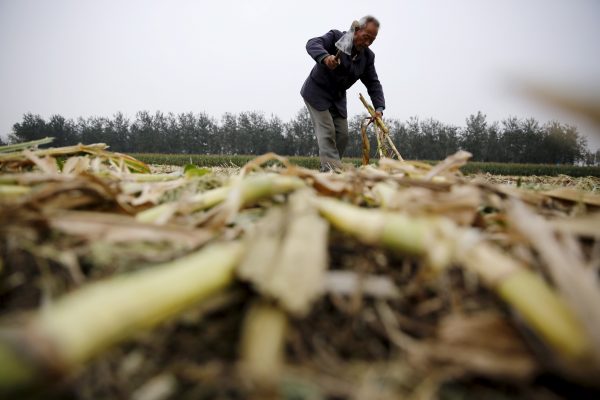According to this new policy, insurance companies will offer agricultural insurance based on prices in the futures market — which ensures farmer incomes — and then take out reinsurance through options outside of the futures market. Risk management companies then repeat this process in other markets, further spreading risk until it is minimised.
China’s agricultural insurance reform is based on the United States’ Crop Revenue Insurance model. The US model provides income support to primary producers based on financial mechanisms such as average insurance yields, forecast prices, moving averages of previous annual output, and harvest prices derived from futures contracts.
Hu Hengyang, an inspector at the National Development and Reform Commission’s Rural Economy Department, announced in September 2015 that all food commodity markets were to move away from the engrained state procurement system to a new target pricing system. Target pricing allows for the government to subsidise producers when the market price falls below the ‘target price’ and avoids some of the issues under the state procurement system such as prohibitive costs, overcapacity and oversupply. Target pricing also acts as an interim solution between state procurement and market pricing. Already target pricing has been adopted for oilseeds, cotton and corn, with rice and wheat likely to follow suit.
China’s provinces will set target prices, providing the market signals that the futures markets are not yet capable of. By improving food prices and market regulation mechanisms, the government hopes to reduce farmers’ reliance on centralised purchasing and allow for the market to take on a larger role.
Agriculture sector insurers are also now launching target price insurance. This will mean that government subsidies to supplement rural incomes can be replaced by target price insurance, essentially paving the way for insurance to perform the social policy function previously served by guaranteed state purchases. Target price insurance also acts as a price floor, protecting producer-set prices from falling below those set by provinces.
While some argue that traditional insurance cannot meet the needs of modern agriculture, China’s target pricing system engineers still face major challenges. First, designing a price setting mechanism is difficult. Futures markets do not yet properly understand how to gauge future prices and the systemic risk is too high because insurance markets are tightly integrated and the nascent reinsurance market is unwilling to bear risk.
For the system to avoid failure, futures market reform is needed to allow commodity exchanges to independently set prices against the insurance firms that offer policies. This would ensure that primary producer incomes are secure and that, if insurance firms reinsure against potential loss, the risk of falling agricultural product prices is mitigated.
Second, small-scale farming, institutional bottlenecks and emerging financial risk may stymie implementation. While the Chinese Communist Party has an implicit social contract to support farming households, the extension of market risk to these farmers without land collateral is potentially too exhaustive a drain on government resources. What’s more, peasants’ political weight is highly dispersed meaning that their interests are unlikely to prevail in any disputes. But with insurers enjoying policy support, farming households will have greater protection against risk than they would in an open market.
China’s futures markets are yet to prove they can accurately set prices. Without genuine price-setting mechanisms and reinsurance markets, insurers remain unable to price risk. Currently neither the commodities exchanges at Zhengzhou nor Dalian enjoy sufficient market confidence or liquidity for their contract prices to serve as market signals. Futures exchange reform is likely a step too far for 2016, but without it target price insurance may falter.
Target price insurance is an unattractive risk for all but policy-supported insurers. The pattern set by Henan state-owned enterprises (SOEs) forming the Zhongyuan Agricultural Insurance Company will repeat as provincial governments and local SOEs unite to form local insurance blocs. The move towards household farmers becoming insured will be a huge positive for the sector. But more reform is needed, such as in the current system of rural workers depending on rural credit cooperatives rather than commercial banks.
Extending market risks into an under-resourced sector, without the benefit of market-driven price signals, introduces new forms of financial stress to agricultural communities. But agricultural insurance also underpins rural social policy. If successfully deployed, institutional development of futures contracts and commodity exchanges can begin to truly set accurate prices and improve agricultural production in China.
Tristan Kenderdine is Research Director at Future Risk in Hong Kong and lecturer in Public Administration at Dalian Maritime University, China.

